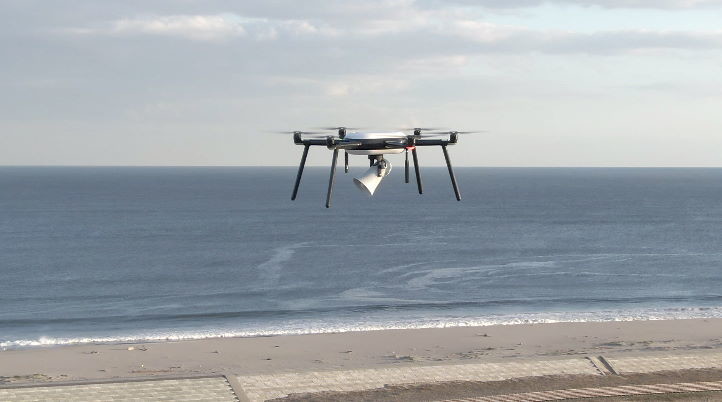Nine years ago, Sendai city in Japan’s Tohoku Region was struck by powerful tsunami waves that reached heights of around 10 meters and overwhelmed the walls and defenses constructed to protect the local inhabitants along the coast. Moving as much as 10 km inland and destroying over 100 safe evacuation sites, residents had eight to ten minutes to move to new safe zones. Communications were scarce as first responders moved around in cars with speakers, which also endangered them. To take on these issues and make the city more environmentally friendly and resilient to disasters, Nokia signed a cooperation agreement with the local government to use drones for tsunami evacuation alerts in 2017.
In November 2019, Nokia performed the world’s first test of a private LTE mobile broadband network to demonstrate the effectiveness of drones for disaster prevention and mitigation in Sendai coastal areas, specifically at the Minami-Gamo wastewater treatment plant, one of the main areas of devastation that was rendered inoperable by the tsunami.
For this test, Nokia had to provide real-time information about what was happening across the affected area, even when the public communication infrastructure was down. Moreover, it was important to make sure the information coming from sensors translated into real-time instructions to direct people to safe areas, help first responders on the ground, and monitor the progress of the evacuation in real-time to update the participants as more information and analysis came in. Also, the company had to provide reliable, mission-critical communications for controlling drones over large distances and conduct these alert operations over broad areas.
Powered by Nokia Digital Automation Cloud, Nokia Drone Networks—an end-to-end solution comprised of a control center Nokia drones, private and secure mobile broadband, and cloud connectivity—enabled various automated drone fleets to fly around the city’s coastal areas. To easily and safely monitor the movements of evacuees, the drones were equipped with HD and thermal cameras. By mounting speakers to the drones, the testers delivered recorded and real-time voice messages through the drones to sound alerts and guide evacuees to safe areas. This way, Nokia and Sendai city successfully ran the simulated disaster and highlighted how first responders can facilitate disaster prevention and mitigation without risk to personnel managing the evacuation activities.
"The use of these drones seems to be very effective in ensuring the safety and security of Sendai and its surrounding areas,” said the Mayor of Sendai City, Kazuko Kohri. “The demonstration by Nokia showed that we should be able to respond faster and provide better information to the people in the most affected areas during a potential disaster. We are very hopeful that Nokia Drone Networks will help us to reduce the risk for our citizens."
Since Japan is more susceptible to earthquakes and tsunamis, it’s understandable that the country is seeking new technologies to improve disaster response. Last year, the Fire and Disaster Management Agency (FDMA), focused on the safety and security of Japan, announced its plans to train a total of 135 personnel by fiscal 2023 and dispatch them as instructors to fire departments that have yet to introduce drone technology, in order to promote the use of drones in disaster response efforts. In 2018, Akimasa Kameda, the director of the Robot and AI technology Department at NEDO, talked about how drones will work for disaster response, and how the Fukushima robot test field helps to showcase how the technology will make a difference in emergency circumstances.
“In the event of a disaster, the most important thing is to protect the lives of people,” Kazuo Endo, General Manager, Economic Affairs, Sendai city, mentioned in the video above. “We believe the smart city initiative will be important for Sendai city to show our approach in the field of disaster prevention and smart cities, not only in Japan but also around the world.”
According to Nokia, the Nokia Drone Networks solution isn’t for safety and security only but also construction, fire monitoring, smart cities, and transportation. The company is committed to working with cities, first responders and other health and safety agencies in their quest for a safer, more livable and secure community.















Comments